Stop overpaying - start transferring money with Ogvio. Sign up, invite friends & grab Rewards now! 🎁
Probably, you’ve just read about how amazing Ripple is, how many wonderful pros it has, and how you should buy it right this instant. Well… That’s cool, but slow down a bit and think it through. Sure, Ripple is great and all, but if you don’t have the best Ripple wallet, then where are you going to store it?
Well, today’s your lucky day! I'll tell you all about the best Ripple wallets, including both hot options such as Binance and cold ones like Ledger and Trezor. Here's the full list we will be discussing in this article:
- Ledger Flex - Cold Wallet With E-Ink Touchscreen
- Ledger Stax - Customizable Cold Wallet
- Trezor Safe 5 - Fully Open-Source Cold Storage
- Binance Web3 Wallet - Self Custody Hot Wallet
- Trezor Safe 3 - High Security Cold Wallet
- Ledger Nano X - Small Yet Solid Cold Wallet
- Ledger Nano S Plus - USB-Sized Cold Wallet
- Xaman - Hot Wallet Designed For XRPL
Don't worry, I'll also talk about what Ripple is and why it is as cool as it is.
1. Ledger Flex - Cold Wallet With E-Ink Touchscreen
Ranks #1 out of 8 Crypto Wallets
- + User-friendly design
- + Robust security
- + Long battery life
- + Thousands of digital assets
- + Free Ledger Recovery Key included
- - No wireless charging
$90 BTC BONUS
Ledger Holiday Season Sale
Grab Ledger Stax, Flex and Nano S Plus during this Holiday Season & get BTC vouchers worth up to $90! 2025 is almost over and so is the stock for this deal, hurry up!
Ledger Flex is undoubtedly one of the best Ripple wallets on the market, combining top-notch security with user-friendly features.
To begin with, it boasts a durable aluminum frame, designed to withstand external shocks and impacts, ensuring your device remains safe under tough conditions.
On top of that, it features a CC EAL 6+ certified secure chip — one of the highest certifications a security chip can receive, considering that the maximum rating is 7. This guarantees that your assets are protected by some of the most rigorous security standards available.
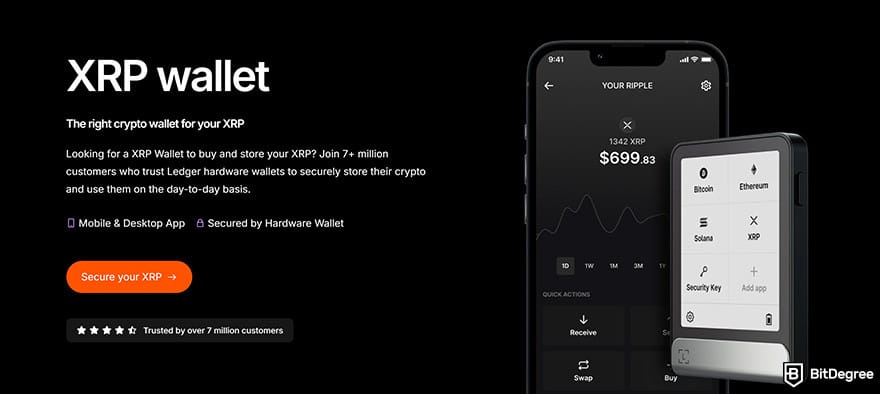
Ledger Flex supports over 5,500 cryptocurrencies, including, of course, Ripple (XRP). Managing your portfolio is made simple thanks to its large color touchscreen.
Moreover, it has Bluetooth connection and a built-in battery, which makes it a perfect option for those who want to manage their assets on the go.
With Ledger Security Key, you can connect your Ledger Flex to your mobile device via NFC with a single tap, acting as both a 2FA and a passkey, so you can log in without passwords while enjoying an extra layer of security.
No matter how secure your wallet is, always write down your 24-word recovery phrase and store it safely offline. Without it, you won't be able to recover your assets in case of theft and loss.
Ledger Flex costs $249. While it may not be the most budget-friendly choice, it's worth every penny.
2. Ledger Stax - Customizable Cold Wallet
Ranks #2 out of 8 Crypto Wallets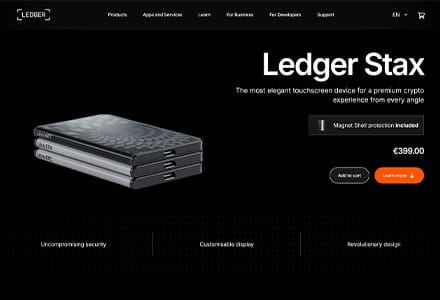
- + A brand-new design
- + Industry-leading security
- + Coin, token and NFT storage
- + High levels of customizability
- + Free Ledger Recovery Key included
- + Wireless charging
- - Pricey
$90 BTC BONUS
Ledger Holiday Season Sale
Grab Ledger Stax, Flex and Nano S Plus during this Holiday Season & get BTC vouchers worth up to $90! 2025 is almost over and so is the stock for this deal, hurry up!
Ledger Flex and Ledger Stax share several similar features, especially when it comes to security. Both devices include the CC EAL6+ secure element chip, support recovery seeds and passphrases, and require a PIN code to access your wallet. However, Ledger Stax brings a few unique enhancements that make it even more appealing.
First off, it has a slightly longer and slimmer 3.7” color display — about the size of a credit card. This not only makes it visually more elegant, but also easier to use and pocket-friendly. Despite its larger screen, it's actually lighter than the Ledger Flex.
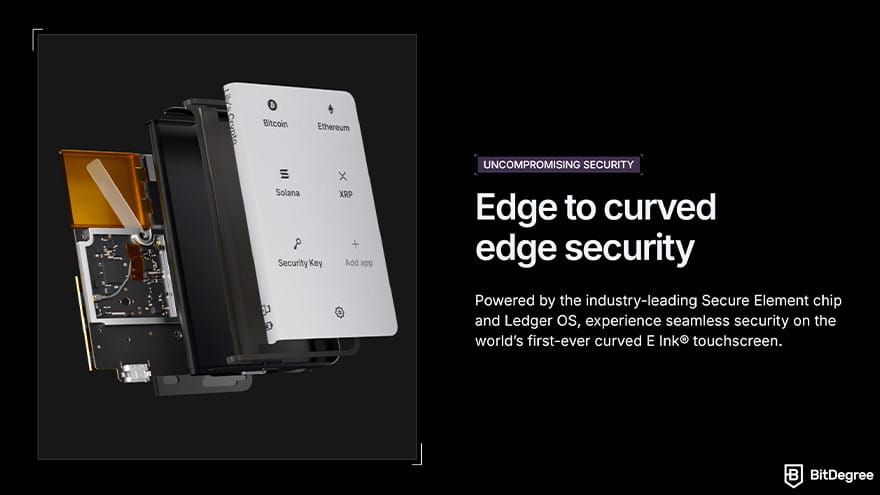
Ledger Stax connects effortlessly to Ledger Live via Bluetooth, USB cable, or NFC. Plus, it comes with a built-in battery that supports wireless charging, making it one of the most convenient wallets for on-the-go use. You can manage over 5,500 assets across desktop, iOS, and Android devices with ease.
The current price is $399, which includes the Magnet Shell protective case and a free wireless charger. This offer is available for a limited time, so be sure to check Ledger’s website for the latest details.
3. Trezor Safe 5 - Fully Open-Source Cold Storage
Ranks #3 out of 8 Crypto Wallets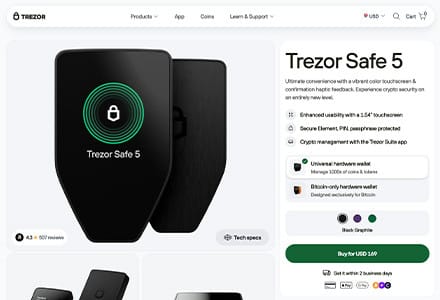
- + Supports 1,000+ crypto assets
- + Easy navigation
- + Open-source
- + EAL6+ certified chip
- + Enhanced security features
- - Quite expensive
- - No seed recovery service
EXTRA 10% OFF
With Trezor Promo Code "Special2"
Get an exclusive 10% discount on ANY Trezor product, including the newest Safe 7 wallet, with our promo code "Special2"! Works on top of other Trezor Holiday Sale discounts.
Trezor is one of the better-known names in the hardware crypto wallet industry. The brand has been around for quite some time, and being a veteran in the market, it has quite a few different wallets to offer to its clients.
The top-of-the-line option, however, would have to be the Trezor Safe 5.
The Safe 5 is an all-around improved take on Trezor’s older hardware wallet selection. This newer wallet puts an even bigger emphasis on security and user experience, having an integrated touchscreen that’s both easy and intuitive to use.

Furthermore, the Safe 5 wallet brings back a rather special feature from the older Model T - microSD card slots. Namely, you can insert a microSD into your wallet, which will be used to encrypt your PIN codes - view it as an additional layer of security for your assets!
As far as the best Ripple wallets are concerned, Trezor’s got you covered. With the Safe 5, you’ll be able to send and receive XRP, as well as manage it via the Trezor Suite graphical interface.
As of writing this, the Trezor Safe 5 retails for €169.

Did you know?
All Crypto wallets may look similar to you but they're NOT all the same!
4. Binance Web3 Wallet - Self Custody Hot Wallet
Ranks #4 out of 8 Crypto Wallets
- + Semi-custodial meets next-gen MPC
- + Incredibly easy-to-use
- + Connectivity to various dApps
- + Access to token swapping through Bridge 2.0
- + Potential yields through staking
- - No browser extension
SECURE $600 BONUS
Binance Holiday Sale
Sign up on Binance and claim up to $600 in trading fee credit for completing simple tasks during this Binance Holiday Sale. Use our Binance referral code (49316610) to activate the offer!
Binance Web3 Wallet is Binance's official self-custody hot wallet, designed for secure and easy interaction with the crypto world.
Unlike the built-in wallet you get inside the Binance exchange, this is a fully functional Web3 wallet, meaning you can use it both inside and outside the Binance ecosystem.
This means you can easily buy Ripple on Binance and quickly move it to your Web3 wallet. Sure, it’s not as secure as a cold wallet, but self-custody is always better than leaving your funds on the exchange. The good thing is, Binance makes this process super fast and hassle-free.

Binance Wallet uses Advanced Multi-Party Computation (MPC) technology to split your private key into three key-shares, which are stored separately — one on your device, one on your cloud storage, and one on Binance's secure system. Thanks to this, you don't need to worry about seed phrases!
You should always protect your cloud-stored key-share with a strong recovery password known only to you.
Binance Web3 Wallet also offers real-time alerts if a token, blockchain, or smart contract is considered risky, including features like wrong address protection and malicious contract detection.
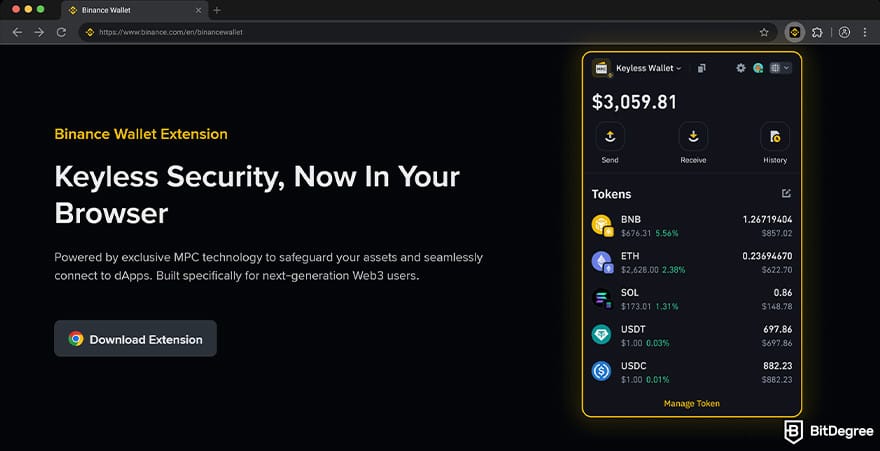
With built-in integration to Binance Bridge and other cross-chain services, you can easily swap tokens between blockchains at competitive prices. You also get direct access to the world of dApps, allowing you to swap, transfer, and even earn yield with just a few clicks.
And the best part, like many other hot wallets, it's completely free to create and use!
5. Trezor Safe 3 - High Security Cold Wallet
Ranks #5 out of 8 Crypto Wallets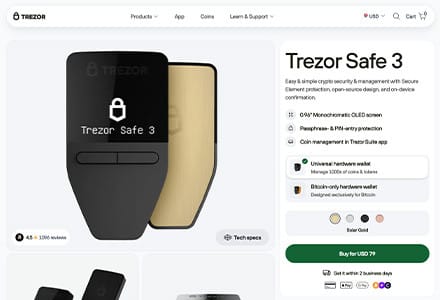
- + Resistant to brute-force attacks
- + Easy to set up
- + Crypto-industry pioneer
- + Supports 1,000+ digital assets
- + Open-source code
- + Affordable pricing
- - Potentially uncomfortable design
- - Plastic screen prone to scratches
Trezor Safe 3 is considered one of the best Ripple wallets with its simple design and robust security, and support for over 1,000 coins and tokens.
Security-wise, it comes with a CC EAL6+ certified secure element, offering strong protection for your private keys. One of its biggest advantages is that it’s a fully open-source wallet, which means its code can be audited and verified by the community for maximum transparency.
Trezor is the first-ever cold wallet manufacturer and has over a decade of experience in the industry.
It features a 0.96" monochromatic screen and a two-button pad for easy navigation and transaction confirmations. The device only connects via USB to your devices, so there is no Bluetooth support
 .
.
However, it still works smoothly with computers and Android devices through the Trezor Suite app. Note that Trezor Safe 3 is not fully compatible with iOS devices. Thus, you can only use it for checking your balances.
As of writing, it costs $79, which is quite affordable for such features.
6. Ledger Nano X - Small Yet Solid Cold Wallet
Ranks #6 out of 8 Crypto Wallets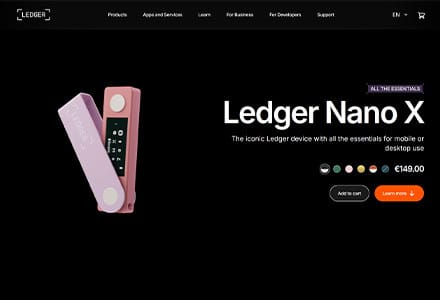
- + Can be managed from mobile device
- + Very secure
- + Supports more than 5,500 cryptocurrencies
- + Comfortable design
- - Relatively expensive
$90 BTC BONUS
Ledger Holiday Season Sale
Grab Ledger Stax, Flex and Nano S Plus during this Holiday Season & get BTC vouchers worth up to $90! 2025 is almost over and so is the stock for this deal, hurry up!
Ledger Nano X is by far one of the most affordable and best Ripple wallet options. Of course, it lacks some features compared to other models, but let’s see if those really matter to you.
Ledger Nano X is about the size of a USB stick, which makes it very convenient to carry around. However, as you might guess, it doesn’t have a touchscreen. Still, you can easily confirm transactions on its screen using the physical buttons.
Despite its compact design, you can still connect it not only to your desktop but also to iOS and Android devices, thanks to its USB and Bluetooth support for Ledger Live. Even NFT management is available through this method.

Of course, it also comes with a secure element, certified with CC EAL5+, and features recovery seed and passphrase to keep your assets safe.
Ledger Nano X is currently priced at $149, and it’s one of the most feature-rich cold wallets on the market in this price range — most competitors offer way less for similar prices.
7. Ledger Nano S Plus - USB-Sized Cold Wallet
Ranks #7 out of 8 Crypto Wallets
- + Top-tier security
- + DeFi app support
- + Wide range of supported assets
- + Fair-priced
- + NFT support (with Ledger Live)
- - Awkward button placement
$90 BTC BONUS
Ledger Holiday Season Sale
Grab Ledger Stax, Flex and Nano S Plus during this Holiday Season & get BTC vouchers worth up to $90! 2025 is almost over and so is the stock for this deal, hurry up!
When Ledger first added Ripple to its coin list, most other Ledger models didn’t even exist yet. As soon as the Ledger Nano S Plus made Ripple storage possible, it automatically became one of the top picks for the “best Ripple cold wallet” title.
Already well-known in the wider cryptocurrency community, the Ledger Nano S Plus is a hardware crypto-storing device that has replaced the original Nano S wallet. As with its predecessor, however, the Nano S Plus focuses on security. As you know, it’s a cold wallet, which automatically provides more security and reliability when compared to its hot counterparts.
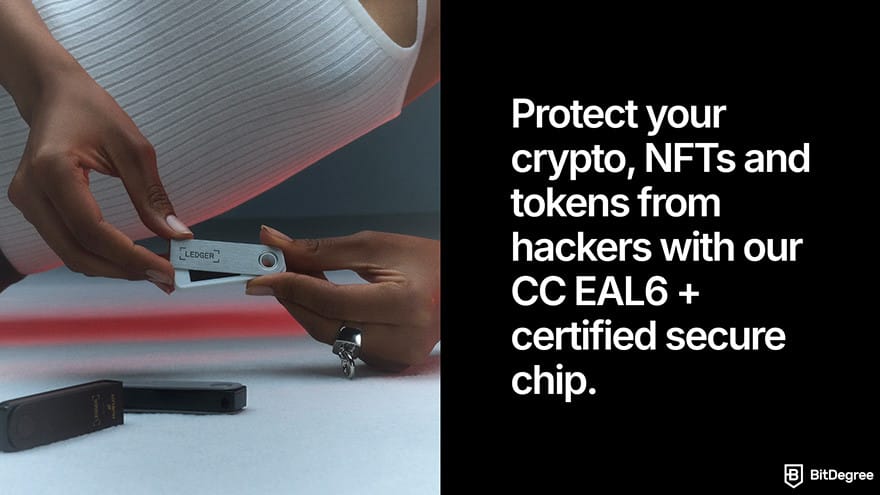
Just like other Ledger wallets, it also offers 2-factor authentication, an individual PIN, and a recovery option. Plus, it comes with a CC EAL6+ certified secure element.
It has a small built-in screen to easily check your balance and confirm Ripple transactions without hassle. You can connect your Ledger Nano S Plus to your computer and Android devices only via USB to use Ledger Live, and iOS devices are not compatible.
If you’re looking for the best Ripple wallet, and are not shunned away by spending some money to get a cold wallet, the Ledger Nano S Plus is currently seen as one of the best options available in the market at the price of $79.
8. Xaman - Hot Wallet Designed For XRPL
Ranks #8 out of 8 Crypto Wallets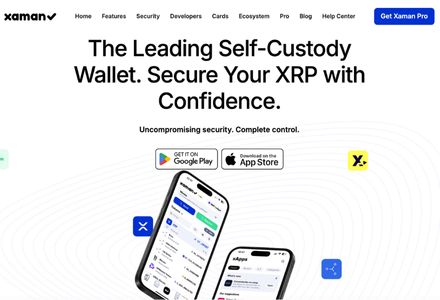
- + Non-custodial
- + Supports biometric authentication
- + Explicitly designed for XRPL
- + Available on both iOS and Android
- - Does not support cryptocurrencies outside XRPL and Xahau
- - Lacks a desktop version
Xaman Wallet (formerly known as XUMM) is a hot wallet specifically designed for the XRP Ledger (XRPL) and its smart contract-enabled sidechain, Xahau. For that reason, while it supports many cryptocurrencies, you won't be able to find major coins like BTC, ETH, or others; rather, you can store these assets:
- XRP (the native token of the XRPL)
- Tokens issued on XRPL (wrapped assets, stablecoins, NFTs)
- Assets on Xahau (the XRPL sidechain)
Since it's a self-custody wallet, you are the only one who has access to your private keys. While this is a good thing, because your funds are not stored by a third party, you also need to be careful about your access and backup to avoid losing your assets permanently.
Xaman is solely a mobile wallet, so there is no desktop or browser version of it, but you can use it on both your Android and iOS devices.
And being non-custodial is not the only security feature it has—Xaman Wallet supports biometric authentication, has undergone independent security audits to ensure its infrastructure meets high standards, and requires explicit user approval for sensitive actions like sending funds or signing transactions, reducing the risk of unauthorized activity.
If you want even more safety, Xaman also supports the Tangem Card, which is a credit card-sized hardware wallet that uses NFC (Near Field Communication) to interact with your smartphone. It usually costs around $16 to get a card if you are using the free version of Xaman.

However, if you subscribe to Xaman Pro priced at $60 per year, you’ll receive a Tangem Card at no extra cost, along with additional perks like access to exclusive xApps, priority support, and more.
What is Ripple (XRP)?
You already saw the list of the best Ripple wallets, so you are ready to buy your first Ripple now. But why buy Ripple? You likely know some key benefits already — here are a few more perks and fun facts.
First of all, I don’t know if you knew this, but Ripple is actually the name of the company behind the coin — the cryptocurrency itself is called XRP. Over time, though, people got used to calling the coin Ripple. And that’s all good — to avoid confusion, I’ll do the same (unless stated otherwise).
Simply put, Ripple (XRP) is a centralized cryptocurrency created as a mean for faster money transfers. The main keyword in here is centralized because it is one of the major unique features of the XRP coin.
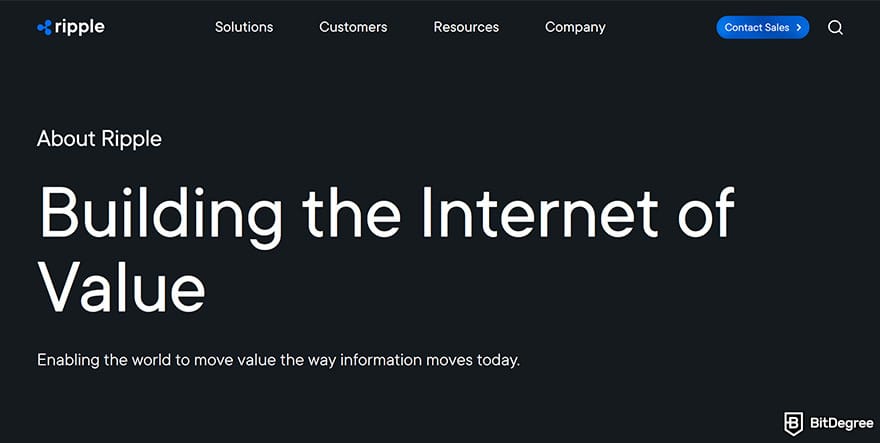
Most of the cryptocurrencies that are currently present in the market (especially the more mainstream, well-known ones) are decentralized. This means that their code is accessible to anyone - if you’d wish to participate in some of the development activities surrounding the cryptocurrency and its blockchain, you would be free to do so. On the other hand, centralized coins like Ripple do not have this feature.
A centralized coin belongs to one single entity (might be a developer, a team, or a company), and no one else can pitch in when it comes to the coin's support.
This is quite a controversial topic in the cryptocurrency community. On one hand, this means that cryptos like Ripple (centralized ones, that is) are more stable and are less likely to produce some unexpected and unwanted surprises when it comes to network crashes, price swings and so on. If a potential investor is only concerned with making a profit, this becomes a great feature.
On the flip side, the hardcore cryptocurrency community that is less concerned with making a profit and more interested in the concept of crypto itself hates Ripple.
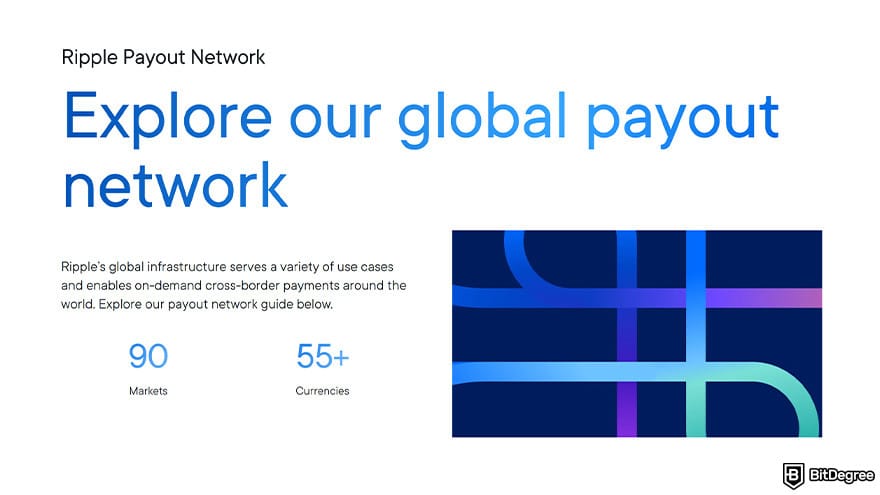
You see, the original purposes of cryptocurrencies (as proposed by the Bitcoin whitepaper) were centered around privacy, decentralization, and freedom of transactions. Centralized coins like Ripple are seen as a step back from these goals.
Ripple (XRP) is a huge topic of discussion within various circles of people who are interested in cryptocurrencies and their supporting networks. However, there is one feature that Ripple has that is deemed to be the leading cause of Ripple’s attractiveness: speed.
📚 Read Further: Ripple Coin (XRP)
Bitcoin VS Ripple
Needless to say, Bitcoin (BTC) has probably got the most loyal following out of all of the cryptocurrencies that there currently are. But even the most dedicated of fans admit that there are problems with the coin that are yet to be resolved, probably the biggest one is being speed.
With huge numbers of people pitching into Bitcoin mining every single day, the cryptocurrency’s network is becoming more and more encumbered. This, in turn, leads to slower transaction rates - fast transactions aren’t something that Bitcoin was known for, to begin with.
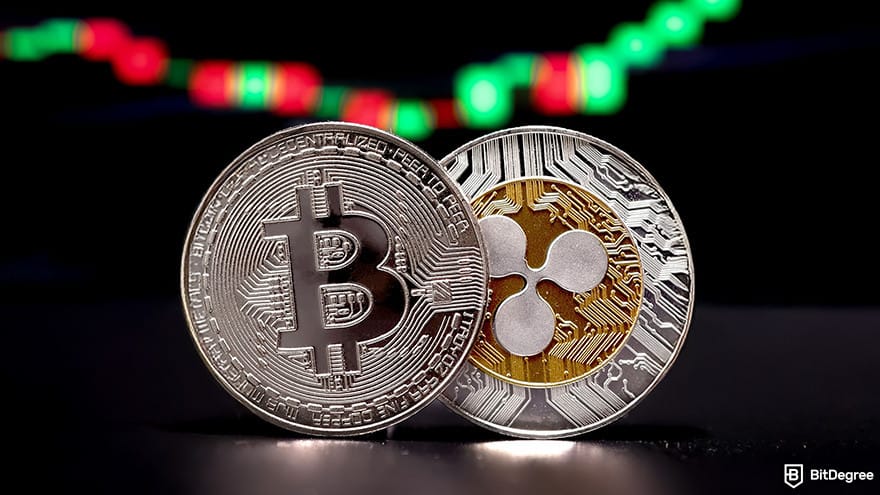
Many altcoins try to solve this problem by introducing networks that handle transactions at double or triple the speed that Bitcoin does. You’ve probably guessed it already, but one of the most famous of these altcoins is Ripple (XRP).
Ripple aims to revolutionize the speed at which a transaction between two parties is performed, which it succeeded, especially compared to Bitcoin.[1] It does so by applying the cryptocurrency formulas and combining them with its own, unique network. Now, take that and add centralization into the equation - what you get is the reason why so many banks love and accept Ripple into their systems.
📚 Read Next: How to Buy XRP?
Best Ripple Wallet: Hot VS Cold?
I provided you with the best wallet options for Ripple, both cold and hot ones. However, if you are not familiar with these terms or cannot decide which type suits your needs best, don't worry, I'll explain these concepts further now.
Hot Wallets
A hot cryptocurrency wallet is a wallet that is constantly connected to the internet (online, software, etc.). Naturally, this type of wallet has its pros and cons, but let’s leave that for another tutorial. It is enough to know that this type of Ripple coin wallet is the most popular one, mostly because it’s almost free.
Now you might be thinking - what does he mean - almost..?
|
|
|
|
|---|---|---|
| Software | Software | |
| Best for Storing Cryptocurrencies | Best for Safely Storing Cryptos | |
| All Binance Coupons | All Coinbase Wallet Coupons | |
| One of the best exchange-wallets on the market. | One of the safest software crypto wallets. | |
| Visit site Read review | Visit site Read review |
Table: The main features of the Coinbase Wallet and the Binance Wallet
You see, hot cryptocurrency wallets are usually completely free of charge (at least when it comes to the wallets themselves). However, Ripple is that one exception. For each XRP wallet that you create, you’ll need to pay 1 XRP to activate the address. It was 20 before, so you're in luck now, it has decreased.
Note that this is the case with both hot and cold wallets alike. That’s why you’ll probably want to have only one, single, and main Ripple coin wallet - it can get quite costly otherwise.
Now that we’ve got that out of the way, let’s move on and talk about cold wallets.
Cold Wallets
As you’ve probably guessed already, cold cryptocurrency storing wallets are those that do not require an internet connection to function or simply work. That makes them great contenders for the “best Ripple wallet” position.
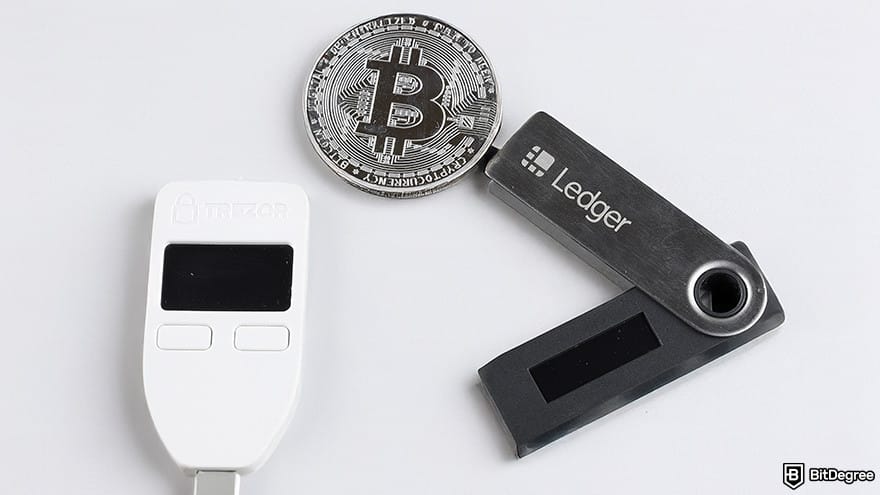
The main reason why its security is constantly referenced, however, is that the device itself doesn’t store your Ripple coins per se. Rather, it tracks your savings on the actual blockchain and displays them with a click of a button.
Cold wallets are far from being as popular as hot ones. And this isn’t a Ripple-exclusive thing, either - this trend is seen in the whole of the cryptocurrency world. However, don’t get the impression that this signifies that they're bad or faulty. The problem with their popularity lies in much more simple reasoning: cold wallets can be expensive.
A decent cold wallet could go anywhere from $40 up to $400. When you compare this with hot wallets (that are usually completely free), it becomes clear why people often choose the latter.
However, cold wallets are seen as a more secure and reliable option. While possessing one, you don’t need to worry about hacking, scams, or system failures. The best Ripple wallets at the moment are Ledger Flex and Trezor Safe 5. If you're storing huge amounts of coins, you should definitely consider them.
Why Not DIY?
If you don't want to spend a whole lot of money but are still interested in cold wallets, there is an option for you, too - creating your Ripple paper wallet.
Although this is a lesser-known and not-so-often-used method of storing Ripple, it is a good option. A Ripple paper wallet is still a ‘cold wallet’ - it’s just different in its kind. Just like the Ledger is a hardware cold wallet, so is this a paper one.
The main issue of a Ripple paper wallet is that, at the end of the day, it’s still paper. You'll need to keep it safe[2] from water, fire, dirt, etc. But with proper storage, this shouldn’t be a problem.
Other than the above-mentioned “problems”, paper wallets work the same as hardware ones when it comes to security. They are also very easy to conceal - a small note is much more discreet than a hardware device.
One glance online will show you many different ways to create your Ripple paper wallet. It’s a short and easy process - you shouldn’t encounter any difficulties whatsoever. So, if the best wallet for Ripple is what you’re looking for, do consider paper wallets as a possibility.
Conclusions
Many people online are looking for the best Ripple wallet out there. It is often difficult to give a single, solid answer to the question “What is the best Ripple wallet available?”. There are many reasons for that.
Not everyone is ready to spend money to store their Ripple in a cold wallet; however, options such as Ledger and Trezor are completely worth it. Sure, paper wallets can be an alternative here, but some people don’t like the fact that their vulnerable codes are displayed on a physical object.
Hot wallets are much more approachable, but generally less secure. Even the Ripple desktop wallets are a tricky thing when it comes to internet accessibility and connection. At the end of the day, it all becomes preferential.
Still not sure which is the best Ripple wallet? My personal favorite is Ledger Flex!
Other Crypto Wallets in This Category
Here are other crypto wallets related to the category but not as favored by BitDegree readers yet. In my personal opinion, today there are much more optimal crypto wallets in the list with the higher rating that I'd recommend for the same price range or less.
CoinPayments - Exchange & Online Wallet

- + Has vaults that provide additional security
- + Supports more than 1900 altcoins
- + Quite secure
- - Not as secure as cold storage wallets
- - Break-in back in 2017
A very well-known cryptocurrency trading platform, CoinPayments, offers its users the ability to store various cryptocurrencies in its online wallet. Ripple is no exception.
Coinpayments charges a flat 0,5% fee for the transactions that you make from your wallet. That means that whenever you buy or sell something using Ripple, you’ll be charged 0,5% of the amount of Ripple in the transaction. This rate is considered one of the more competitive deals in today’s crypto trading market. Naturally, deposits and withdrawals are completely free.

Another great feature that Coinpayments offers is that their wallet is a multi-coin one. This means that you can store many more cryptocurrencies (over 2,000) in there - not only Ripple. This can be great if you want to diversify your assets or simply have some backups for Ripple.
While CoinPayments offers mobile apps for both Android and iOS, it currently does not support a dedicated desktop application. All desktop usage must go through the web interface.
Don’t hesitate to try Coinpayments out if you’re trying to find the best Ripple wallet - this company has a trustworthy reputation and is considered to be one of the top dogs when it comes to cryptocurrency trading platforms and hot wallets.
Toast Wallet - Discontinued
.png)
- + Features cryptographic PIN codes
- + Available on both desktop and mobile
- - Only allows to keep Ripple
Toast Wallet was officially discontinued on June 22, 2020, and is no longer supported or available for use. The information below is provided for historical reference only.
At one point, it was nearly impossible to find a “best Ripple wallet” guide that didn’t mention Toast Wallet — and for good reason.
Toast was an exclusive wallet designed specifically for Ripple (XRP). It was very easy to use, open-source, and available as a mobile app (Android and iOS), an online wallet, and a desktop version (Windows, Mac, Linux).
One of the best features that the Toast wallet possessed (besides it being designed specifically as an XRP wallet) was that it emphasized security as the number one priority. Toast had a backup feature, a recovery option, and allowed users to set specific, cryptographic PIN codes for an added layer of safety.
Since it was dedicated solely to XRP, Toast used to be a strong contender for the title of “best wallet for Ripple.” It was definitely worth considering and trying out back in its time.
The content published on this website is not aimed to give any kind of financial, investment, trading, or any other form of advice. BitDegree.org does not endorse or suggest you to buy, sell or hold any kind of cryptocurrency. Before making financial investment decisions, do consult your financial advisor.
Scientific References
1. S. Jani: ‘An Overview of Ripple Technology & Its Comparison with Bitcoin Technology‘;
2. S. Houy, P. Schmid, A. Bartel: ‘Security Aspects of Cryptocurrency Wallets—A Systematic Literature Review’.











